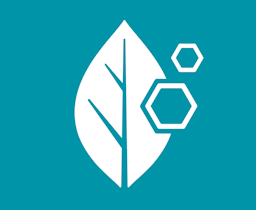Fighting skin ageing from the inside and out
Both internal and external factors contribute to skin ageing, which shows up as wrinkles, dryness, pigmentation, and a loss of tone. Blackmores naturopath Jennifer McLennan explores some ways to protect against skin damage.

One of the biggest external factors that contribute to skin aging is ultraviolet radiation (UV). UV radiation comes in the form of UVA, UVB and UVC. The ozone blocks UVC, which is the most damaging of the UV rays, however UVA and UVB can also cause cellular damage by penetrating the skin layers and causing skin to age. UV radiation may cause damage by:
- Penetrating and damaging the DNA of cells Increasing the breakdown of collagen in the skin, and decreasing the rate at which the fibres are replaced.
- Causing inflammation within the skin.
- Causing free radical damage.
The best way to protect the skin from UVA and B is to cover up when the UV index is above 3. Check out the UV index from your local weather bureau, where available. Look out for a broad spectrum sunscreen that blocks both UVA and B light, but don’t just rely on sunscreen to do the job. It is best to wear both a hat and protective clothing.
Apart from UV rays, skin can become damaged when exposed to other factors including environmental pollution, cigarette smoke and other forms of sun radiation. Infra-red radiation can be felt in the form of heat and it is now believed to cause a similar level of collagen breakdown as UVA radiation.
Treating the skin from the inside out with antioxidants can also help to prevent premature skin aging. Antioxidants are important substances found in foods that help to protect cells against free radical damage. Free radicals can be generated from chemicals and toxins, and are also natural by-products of respiration. Important antioxidants that have been shown to protect the skin are:
- Green Tea - from the same plant as black tea, but contains antioxidants called catechins. The antioxidants in green tea act to scavenge free radicals from external (sun) and (internal) dietary sources, and may help to protect skin cells.
- Lutein and zeaxanthin belong to the carotenoid family of compounds, and are found in broccoli, corn, spinach and kale. Lutein is a naturally occurring antioxidant found in high concentrations in the eyes and skin, and may play a role in protection of cells against UV damage.
- Lycopene is an antioxidant derived from tomatoes and may have a role in protecting the skin from damage.
Eating a balanced whole foods diet containing fresh fruit and vegetables, wholegrains and omega-3 fats from nuts and seeds, fish and green leafy vegetables, is important as it provides oils for the skin and helps to minimise inflammation. Exercise and plenty of fluids are also key for the wellbeing of the body and also the skin.
Taking fish collagen may also be beneficial to provide the body with enough collagen peptides and free amino acids to stimulate the body (fibroblasts) to manufacture more collagen and elastin.
Collagen helps to improve skin repair, skin regeneration and promote new cell growth.
Getting the right balance
When the UV index is below 3, a few minutes of sun before 10 am and after 3 pm in the hotter months will provide most people with adequate sun exposure to maintain vitamin D levels.

Blackmores The articles produced by Blackmores are authored by a dedicated team of expert writers who tailor their content to address topics that resonate with our community's interests.
- DATE
- 24 Oct 2023
- AUTHOR
- Blackmores
- CATEGORY
- SHARE